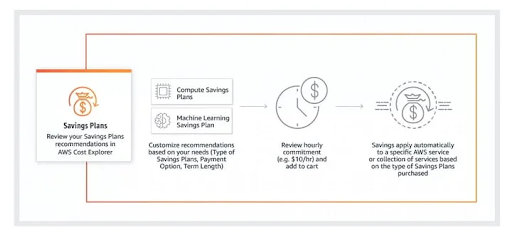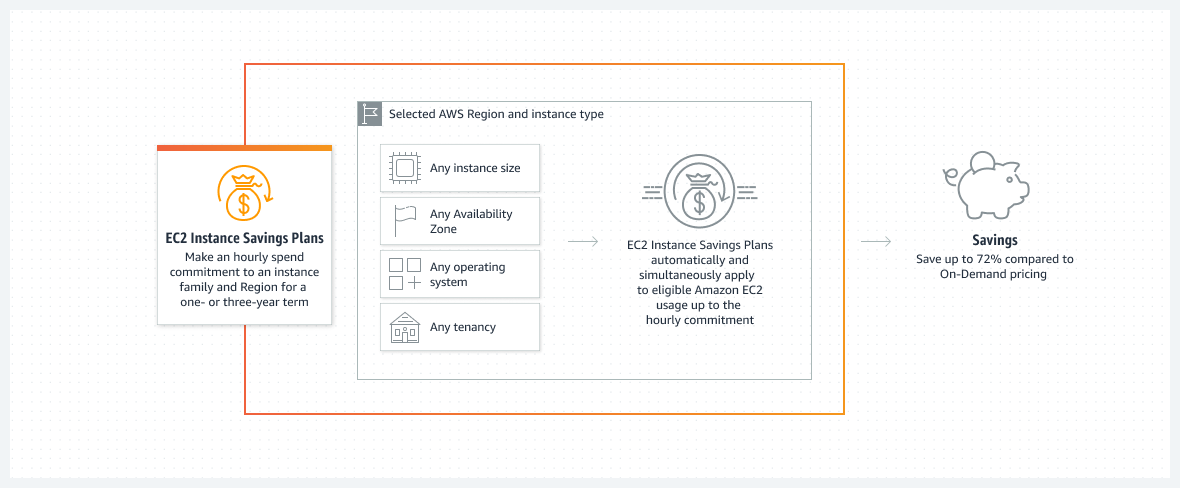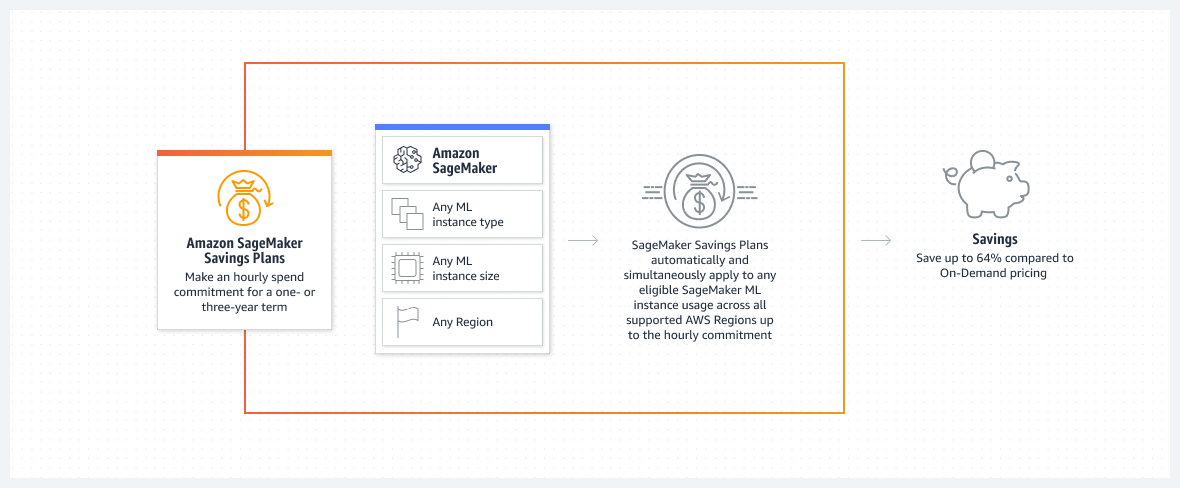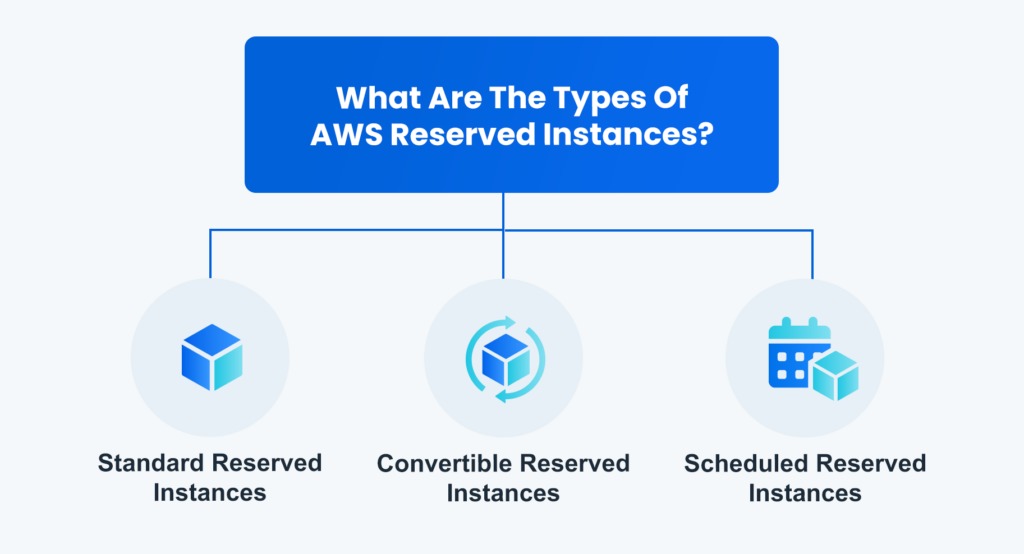AWS has Savings Plans and Reserved Instances, two very different opportunities for users to save big on your cloud spend budget.
But which of these two plans is best for you, and how can you start saving on your cloud management?
In this guide, we’ll cover both options so you can make the best choice when using AWS.
In this article:
- What are AWS Savings Plans?
- What are AWS Reserved Instances?
- Reserved Instances vs Savings Plans: Similarities
- Savings Plans vs Reserved Instances: Differences
- Which Plan Should You Use?
- How to Save Up to 40% of Your Cloud Spend
What are AWS Savings Plans?
Amazon Savings Plan is a flexible pricing model that can help you save over 70% on your AWS compute usage. This plan gives you access to lower AWS EC2 instance usage prices, no matter what instance family, OS, tenancy, region, or size you’re working with.
The catch here is that you’ll need to be able to commit to either a oneor three-year period of specific compute power. So long as your compute usage remains below your agreed-upon amount, you’ll keep saving… though even if you spend vastly below your agreed-upon amount, you’ll still need to play the same number.
Here’s a graphic to help you better visualize how these plans work:

So proceed carefully and only if you know you’ll have regular compute usage for the next one or three years.
AWS offers three Savings Plans, each named for the usage you save with. The Compute Savings Plan, for instance, applies to AWS Fargate, AWS Lambda, and Amazon EC2 usage.
Compute Savings Plans
No matter your family size, AZ, region, OS, or tenancy, these plans automatically apply to Lambda, Fargate, and EC2 instance usage. That means if you were using the Compute Savings Plan and decided to change from C4 to M5 instances and/or move your workload from the US to Europe, you won’t have to worry about any changes to your Compute Savings Plan price.
EC2 Instance Savings Plans

EC2 Instance Savings Plan offers savings up to 72%, but to get bigger savings, you’ll have to commit to less flexibility. This plan locks you into a specific region and instance family, though you can still update your instance size, tenancy, and OS if need be.
SageMaker Savings Plans

An important thing to know about SageMaker Savings Plan is that it does not apply to any ML instance or size, no matter your region, without manual modifications.
If you consistently use Amazon SageMaker instances and more than one SageMaker component, the SageMaker Savings Plans should appeal to you and allow you to change from instance family to region over time while helping you save on spending.
What are AWS Reserved Instances?
AWS Reserved Instances (RIs) are another discount pricing model that can help you save up to 75% on On-Demand Instances—–so long as you purchase your Instances in advance for a one to three-year period.
RIs differ from Savings Plans in that RIs let you “book” your computing power and then pay in advance.
When “booking” these options, you’ll have three different payment options to choose from:
- All Up-front Reserved Instances (AURI)
- Partial Up-front Reserved Instances (PURI)
- No Up-front Reserved Instances (NURI)
There are also two different types of RIs for you to choose from: Standard vs Convertible. We’ll go into more detail on these plans below.
Standard Reserved Instances
Standard RIs give you the biggest bang for your buck with up to 75% off On-Demand instances, and work well if you have steady-state workloads and predictable usage patterns. You’ll only need to commit to a specific instance family and region and be prepared to stick with the same OS and instance class after purchase.
Convertible Reserved Instances
On the other hand, Convertible RIs offer a smaller discount at 54% off On-Demand but do give you more flexibility in that you can change your application. You can exchange your Convertible RIs for other Convertible RIs if you want to try out a different OS, family, or tenancies—–so long as what you exchange for is of equal or greater value.
Regional vs Zonal Reserved Instances
Another thing to keep in mind with RIs is that they either have a regional or zonal scope. Zonal RIs apply only to instances in a particular availability zone, which means you can reserve capacity in a specified Availability Zone. Regional RIs can’t do this; instead, these instances only apply to a particular AWS region within the same family.
Reserved Instances vs Savings Plans: Similarities
RI and Savings Plans do share several features, such as the option to commit to a one or three-year payment period.
Other similarities are:
- Both models are billed by the hour.
- If you exceed your agreed-upon usage period, Amazon applies On-Demand pricing.
- RIs and Savings Plans also have the same three payment options of all up-front, partial up-front, or no up-front.
- Convertible Reserved Instances and Compute Savings Plans offer similar savings amounts, whereas Standard RIs and EC2 Instance Savings Plans offer similar savings.
Keep in mind that Savings Plans don’t provide capacity reservations. But—pro tip—you can still reserve capacity via on-demand Capacity Reservations and then pay lower prices using Savings Plans.

Melissa Abecasis
Director of Customer Success & Sr. Cloud FinOps Engineer, Anodot
Melissa brings a wealth of experience in customer success, cloud financial operations, and program management, with a demonstrated work history in the Information Technology and healthcare industry.
TIPS FROM THE EXPERT
1. Leverage blended strategies for maximum savings
Consider using a combination of both Savings Plans and Reserved Instances. For instance, use Savings Plans for unpredictable workloads across multiple services, and apply Reserved Instances for specific, predictable workloads to maximize overall savings.
2. Align commitments with business cycles
If your business has seasonal or cyclical patterns, align your RI or Savings Plan purchases with these cycles. This alignment ensures you’re not overcommitting during low-usage periods, thereby optimizing cost efficiency.
3.Utilize regional RIs for disaster recovery
Consider using regional Reserved Instances to cover disaster recovery regions. This setup ensures that you benefit from cost savings while maintaining availability in secondary regions.
4. Use Savings Plans for Dev/Test environments
Apply Savings Plans to your development and testing environments, where instance family or region flexibility is often required. This flexibility allows your team to experiment without worrying about cost inefficiencies.
5. Plan for potential resell or migration needs
When opting for Reserved Instances, especially if committing to a longer term, always assess the likelihood of needing to resell or migrate workloads. This consideration can prevent costly commitments if your infrastructure strategy changes.
Savings Plans vs Reserved Instances: Differences
Now, there are significant differences between RIs and Savings Plans. These plans vary in flexibility, discount application, savings amounts for specific AWS applications, and purchasing options.
| Feature | AWS Savings Plans | AWS Reserved Instances |
| Commitment | Spend a certain dollar amount per hour for 1 or 3 years | Use a specific instance at a certain price for 1 or 3 years |
| Flexibility | High (instance family, OS, region, size can change) | Low (limited to specific instance family, region, OS) |
| Scope (Services Covered) | EC2, Lambda, Fargate | EC2, RDS, Redshift, Elasticsearch |
| Savings | Up to 66% | Up to 75% (Standard RI) |
| Management | Automatic application | Requires monitoring for updates |
| Surplus Resell/Exchange | No | Yes (through AWS Reserved Marketplace) |
| Upfront Cost | None | All Up-front (AURI), Partial Up-front (PURI), No Up-front (NURI) options |
| Better for: | Unpredictable workloads, Frequent changes, Diverse services | Predictable workloads, Cost-sensitive, Long-term commitment |
| Additional Considerations | Can’t be sold, Doesn’t reserve capacity | Can be resold (except discounted RIs), Reserves capacity |
The main thing you should know is this:
Reserved Instances are based on your commitment to using instances at a certain price and over a certain time period. On the other hand, Savings Plans require you to commit to using a certain dollar amount per hour over a certain time period.
But let’s get a bit more granular, so you have a solid idea about which plan is the best for you.
Scope
Reserved Instances cover more Amazon tools than Savings Plans. RIs apply across Relational Database Service (RDS), Redshift, Amazon EC2, and ElasticSearch.
On the other hand, Savings Plans cover Amazon EC2, AWS Lambda, and AWS Fargate.
If you’re working with a broader toolset, you likely won’t be able to opt into Savings Plans.
Flexible
Compute Savings Plans offer much more flexibility than Convertible Reserved Instances. Where Savings Plans let you alternate between different locations/regions and usage types, Convertible RIs need you to stick to a specific place, instance type, and OS. With Savings Plans, you can also queue the plan up to apply automatically at a future date, giving you more scheduling flexibility.
Surplus resell or exchange opportunities
If you have surplus RIs, you can always resell them or even purchase Standard RIs from the AWS Reserved Marketplace (but you should know that AWS keeps a 12% service fee). Unfortunately, you aren’t allowed to buy or sell Savings Plans.
Automated coverage
Savings Plans will automatically reapply if you need to change your infrastructure or instances. RIs will need to be monitored to ensure they apply properly. This is very important to keep in mind when calculating Savings Plans vs RIs management overhead!
Better savings
If you’re really hunting for the best savings, Reserved Instances have the better discounts, especially if you’re willing to make a full three-year commitment. You’ll just want to make sure you’re spending the amount you agreed on.
Which Plan Should You Use?
So, based on all of the above, which plan should you use?
It depends on what you want to accomplish with AWS management and cost savings.
In general, Savings Plans offer more benefits than RIs. You get more overall flexibility, making it easier for your business to fluctuate naturally. You’ll also save more money on managerial overhead because the Savings Plan automatically applies itself, whereas RIs require monitoring if and when updates are made.
However, RIs do have their time and place. RIs cover more services and can be resold on the RI marketplace. However, it’s important to know that RIs purchased at a discount (like through EDP or volume tiering) cannot be sold on the AWS Marketplace.
The most important thing to do when considering which plan is the best for you is to keep in mind:
- How much your cloud usage might change in the next three years?
- What services are you using now?
- What services are you going to start or stop using in the future?
- How much time do you have to commit to monitoring your savings plan?
The good news is that even if you’re not sure you’re ready to commit to a one—or three-year agreement, there are still other ways for you to save in the cloud… and we’re ready to share all the trade secrets.
How to Save Up to 40% of Your Cloud Spend
There are more ways to optimize your AWS spend than binding yourself to a one—or three-year agreement. Third-party cloud cost management platforms like Anodot can help you save up to 40% on cloud spend through data analysis alone. Our platform is designed to make cloud management easy and breezy. We even designed an AWS integration offering so you can simplify your toolset.
With Anodot’s cloud cost management platform, you can get comprehensive dashboards showing data down to the hour. That, plus retention periods of up to 18 to 24 months and AI-powered budget projects means you can finally invest in a tool that your finance, DevOps, and FinOps team can all agree upon. Another feature that should appease all your teams? You can get all of your multicloud spend and K8 data in one place. No need to juggle multiple dashboards anymore.
Optimize Azure Functions pricing with our CCM features:
- Real-time Anomaly Detection Dashboards: Customizable dashboards to help you visualize your DevOps cost-savings and identify unusual cloud cost spikes.
- AI-Powered Recommendations: Provides actionable AI-powered recommendations to improve cost reductions and resource utilization.
- Personalized Alerts: Tailored alert systems that offer massive improvements to response times.
- Next-Gen Forecasting: Predictive analyses for accurate future cloud spending and budgeting.
Anodot makes managing AWS costs easy for FinOps organizations. Its real-time anomaly detection and customizable alerts eliminate overspending and constant management overhead. AI-powered support makes budget projections a breeze, and Anodot’s dashboards clarify cloud spending down to the last penny.
Interested in exploring a POC?? Talk to us for more insight into how much you can save on cloud spend with Anodot’s platform.






